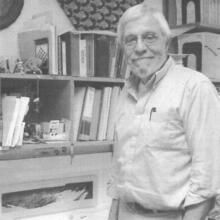
I earned my PhD at Caltech in 1963 and had the opportunities there to take classes from physicists such as Richard Feynman and Willy Fowler. Fowler was one of my thesis advisors, and I was lucky enough to be part of his early research on solar neutrino generation, which led to his Nobel Prize a decade later.
I arrived at Yale as a Physics Department faculty member in January 1966, and stayed until I retired in June 2013. During that time, I carried out nuclear physics research not only at Yale, but also at Princeton, Caltech, and Washington (Seattle), as well as at Argonne, Brookhaven, and Homestake National Laboratories.
The original Wright Nuclear Structure Laboratory (WNSL) tandem accelerator (@ 13 MV) came on-line in 1966, the same year I came to Yale; the second version (upgraded to 20+ MV) came on-line in 1987, and by 2006 WNSL began its transformation into to the Yale Wright Laboratory–studying weak-interactions, dark matter, and looking for other new forms of matter.
During my years at Yale I taught more than a dozen different undergraduate and graduate courses, served as the Director of Undergraduate Studies in Physics for 17 years, and helped to establish the Yale’s Physics Olympics for high school students. I also participated in international conferences at CERN, Tokyo, Munich, and Copenhagen. When I retired in 2013, I was selected to serve as the Senior Marshall at Yale’s Commencement that spring.
Yale, the once all-male liberal arts school, began admitting women undergraduates a few years after I arrived and now, 40 years later, graduates essentially equal numbers of women and male physics majors and Ph.D.s every year; and the biggest capital investment program at Yale is currently in new science laboratories. What a dramatic advance!
I think that it is fair to say that working with WNSL and Wright Lab students over the years and watching them mature has been the most exciting part of my career.
In addition to my professional career work in nuclear astrophysics, my primary extra-curricular interests have been focused on hiking and backpacking in the National Parks on the west coast, including the Rocky Mountains, the Sierra Nevada, and the Olympics where I have wandered, particularly in the Sequoia, Kings Canyon, and Olympic National Parks, typically wandering for 7 to 10 days with backpacks filled with tents, sleeping bags, and food in groups ranging from 5 to even solo.
Overall, it has been exciting to be both an participant and an observer in 60 years of exploring in science and in the outside world of nature; it is exciting to watch the changes and the advancements. Once you step out of the parking lot, you can be days and nights without seeing another person–alone with bears and deer and even the tiniest pikas. Climbing through snow fields and wading across rivers and pumping water out of the streams and lakes–what a feeling of independence that has nicely balanced a career spent largely in labs.
Figure caption: The long picture just over the desk we took in August snow on Elizabeth Pass between Sequoia and Kings Canyon on a backpacking trip about 15 years ago.

